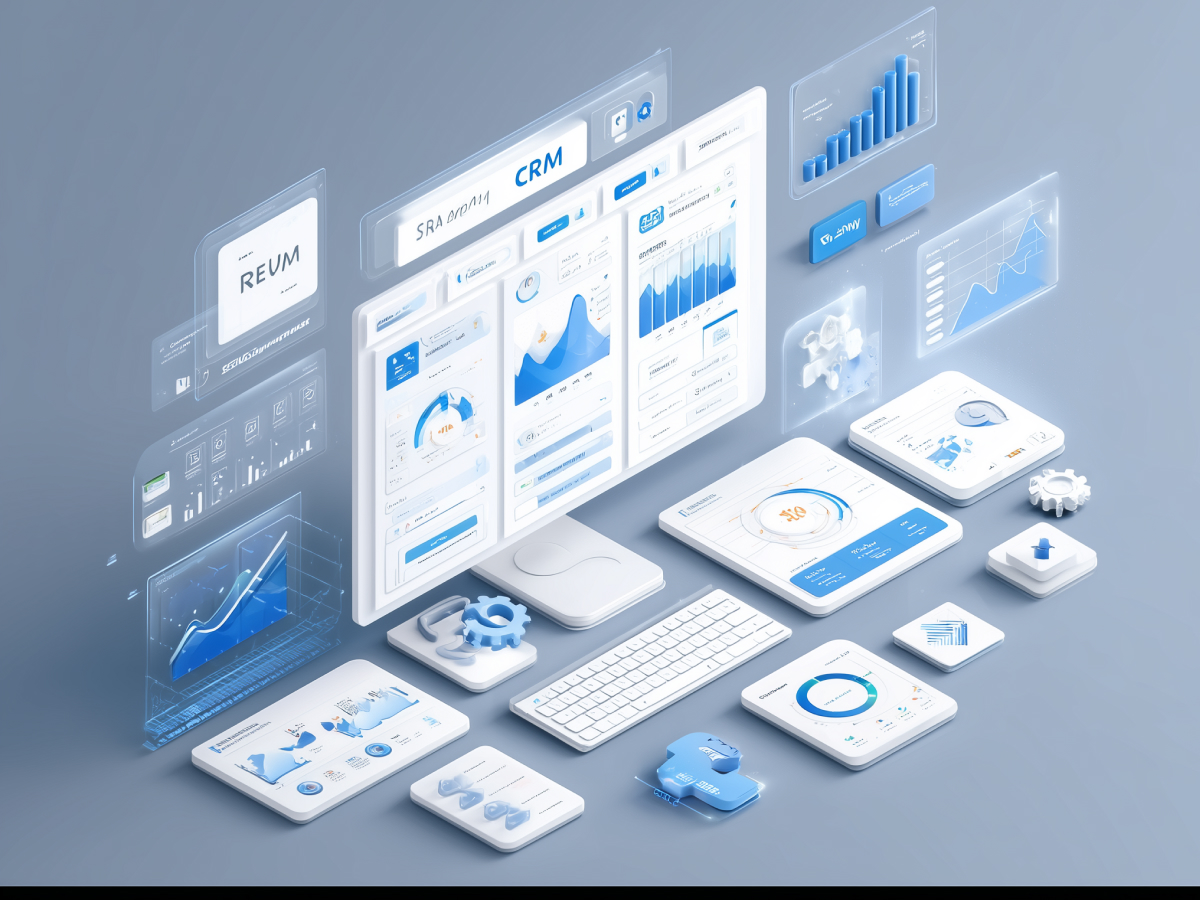In an increasingly data-driven world, preparing your data for AI is the first and highest priority step in expertly harnessing its potential. Azure provides a comprehensive suite of tools designed to help businesses collect, transform, clean, and store data efficiently.
Before taking the plunge into developing AI applications, businesses must make sure that its data is well-organized and accurate, setting off on the right foot from the onset.
Why AI needs clean data to perform at its best
AI relies heavily on the quality of data it processes. Accurate data input is fundamental to producing meaningful results. The adage “Garbage in, garbage out” perfectly captures this principle. Ensuring data accuracy not only boosts the reliability of AI predictions but also enhances decision-making processes.
If your AI system is fed with inaccurate, outdated, or irrelevant data, it will inevitably generate poor outputs.
Many businesses are unaware of the wealth of data they already possess. This data, when properly utilized, can be transformative. Leveraging this data requires careful cleaning and organization.
To illustrate this, one advanced method of using company data involves Retrieval Augmented Generation (RAG), which combines company data with large language models (LLMs) to produce high-quality responses. RAG improves the specificity and relevance of AI outputs by grounding them in proprietary business information.
Managing data chaos for better AI performance
Data scattered across multiple systems and storage repositories poses a challenge for businesses. Fragmentation complicates efforts to ground or fine-tune LLMs, as varied data formats and locations make it difficult to obtain a cohesive dataset. Unifying this disparate data into a single, accessible format is an early priority for any AI initiative.
Data integration is the key to consolidating data from various sources, making it ready for consumption in AI models. Bringing together data from different systems and formats into a unified structure, businesses can streamline their data processing and analysis efforts.
Data integration is the key to AI-ready data
Data integration combines data from multiple sources, transforms it into a consistent format, and stores it in a centralized location. This makes it easier for AI models to access and analyze the data, ultimately leading to more accurate and actionable insights.
Through data integration, businesses are able to make sure that their AI systems operate on the most comprehensive and up-to-date information available – achieving higher-quality AI results and leveraging the full potential of company data.
4 Different paths to seamless data integration
Azure offers several methods to streamline the data integration process, each catering to different business needs. Understanding these methods can help businesses choose the right strategy to consolidate and utilize their data efficiently.
1. Old school ETL: The classic way to integrate data
ETL, or Extract Transform Load, is still a foundational method for data integration. This traditional process involves extracting data from various sources, transforming it to meet specific business or analytical needs, and then loading it into a centralized data warehouse.
ETL is well-suited for scenarios where data needs to be thoroughly cleaned and formatted before storage, making it immediately ready for analysis.
- Extraction: Data is pulled from disparate sources such as databases, CRM systems, and external data feeds.
- Transformation: The extracted data goes through various transformations, including cleaning, deduplication, and reformatting, improving both consistency and accuracy.
- Loading: The transformed data is then loaded into a relational data warehouse where it can be queried and analyzed.
ETL processes are typically used in environments where data quality and format need to be controlled before analysis. It’s particularly beneficial for businesses with complex data transformation needs, requiring robust data governance and compliance measures.
2. ELT: The modern way to integrate data
ELT, or Extract Load Transform, offers a more contemporary method of data integration, reflecting more recent advancements in cloud storage and processing power.
Unlike ETL, ELT involves loading raw data directly into a data lake first, and then transforming it as needed – leveraging the scalability and flexibility of cloud-based storage solutions.
- Extraction: Similar to ETL, data is extracted from various sources.
- Loading: Raw data is loaded into a data lake, such as Azure Data Lake, without prior transformation.
- Transformation: Data transformation takes place within the data lake using powerful processing engines like Azure Synapse Analytics or Databricks.
ELT is particularly beneficial for handling large volumes of data, as it permits transformations to be applied on demand.
Flexibility is ideal for businesses that need to perform complex, ad-hoc analyses or handle diverse data types without the constraints of pre-transformation.
3. Microsoft Fabric as an all-in-one solution for data analytics
Microsoft Fabric is an integrated analytics platform that simplifies data management by uniting various services and tools. It’s an all-in-one solution that provides seamless access to data without needing to be moved into traditional analytical storage solutions like data warehouses or data lakes.
- Unified platform: Microsoft Fabric combines data integration, data engineering, data science, and business intelligence in a single platform.
- Shortcuts to data: Users can create shortcuts to access and analyze data from anywhere, streamlining workflows and reducing latency.
- Integrated services: The platform integrates with Azure Synapse Analytics, Power BI, and Azure Machine Learning, offering comprehensive analytics capabilities.
Microsoft Fabric is designed to meet the needs of businesses seeking a centralized, scalable, and efficient way to manage and analyze data. Its ability to unify data across different sources without physical relocation makes it an attractive solution for modern data-driven enterprises.
4. Leverage Azure’s cloud for custom data integration
Azure’s cloud-based solutions, including Azure Data Factory and Azure Synapse Analytics Pipelines, offer versatile tools for data integration. Businesses can tailor their data integration processes according to specific requirements.
- Azure Data Factory: A fully managed data integration service that facilitates the creation, scheduling, and orchestration of data workflows. It supports data ingestion from on-premises and cloud sources, transformation, and loading into both data lakes and warehouses.
- Azure Synapse Analytics Pipelines: Provides end-to-end analytics capabilities, integrating big data and data warehousing. It supports advanced data integration scenarios, including real-time data streaming and batch processing.
- Microsoft Fabric Integration: Users can leverage Data Factory within Microsoft Fabric to create hybrid data integration workflows, combining traditional ETL and modern ELT processes.
The above cloud-based solutions help businesses collect data from multiple sources, optionally transform it, and load it into appropriate storage solutions. Azure’s flexible and scalable infrastructure supports a variety of data integration needs, from simple ETL processes to complex, multi-step data workflows.
Combining these capabilities with One Lake in Microsoft Fabric, businesses can create a unified data lakehouse, further improving their data management and analytical capabilities.
Analyzing and preparing data before AI deployment
Before AI models can deliver valuable insights, the underlying data must go through rigorous analysis and preparation – an essential step to make sure that AI models function correctly and produce accurate outcomes.
Skipping or underestimating the data preparation phase can lead to AI systems that are unreliable or even counterproductive.
Inaccurate or poorly prepared data can lead to misinformed decisions and lost opportunities. For example, Gartner reports that poor data quality costs businesses an average of $15 million per year. Proper data analysis and preparation mitigate these risks by addressing errors and inconsistencies, thus laying a solid foundation for any AI initiative.
Discover and fix data issues during initial exploration
The initial exploration of data involves a detailed examination to identify and correct inconsistencies. This transforms raw data into a reliable resource that AI models can effectively use. Here are key areas to focus on during this phase:
- Incorrectly formatted data: Data may come in a variety of formats that are incompatible with AI models. For example, date fields might use different formats (MM/DD/YYYY vs. DD/MM/YYYY), which can lead to misinterpretation. Standardizing these formats is a core priority.
- Invalid data: Some data entries may be clearly incorrect, such as negative values for quantities that should only be positive. Identifying and filtering out these invalid entries is key to maintaining the integrity of the dataset.
- Duplicate data: Duplicate entries can skew analysis and model training. For instance, having multiple records for the same transaction can distort sales metrics. Removing duplicates makes sure that each data point is unique and accurately represented.
- Unnecessary columns: Data sets often contain columns that are irrelevant to the analysis. These extraneous columns clutter the data and complicate processing. Streamlining the dataset by removing unnecessary columns helps in focusing on the relevant information.
- Creation of new columns: Sometimes, raw data needs to be optimized with additional calculated fields to make it more meaningful. For example, creating a column that calculates the time difference between order date and delivery date can provide insights into logistics efficiency.
Cleaning and preparing data improves the quality of the AI output and the overall efficiency of the data processing pipeline.
#McKinsey estimates that businesses that leverage data effectively are 23 times more likely to acquire customers and 19 times more likely to be profitable.
Azure’s powerful tools for data preparation
Azure offers a suite of tools designed to streamline data preparation, so that your data is ready for advanced analytics and AI modeling. Among the most effective tools for data preparation are notebooks in Azure Synapse Analytics, Azure Databricks, and Microsoft Fabric.
These platforms provide comprehensive environments for data engineering so that businesses can manage and process data more efficiently.
Azure Synapse Analytics
This integrated analytics service bridges big data and data warehousing. Synapse Analytics lets users perform complex queries and run analytics at scale. With Synapse notebooks, users can perform data wrangling, cleaning, and transformation tasks in a unified environment.
The notebooks support languages like SQL, Python, and Spark, providing flexibility for data scientists and engineers to prepare data interactively.
Azure Databricks
Built on Apache Spark, Azure Databricks is tailored for big data processing and analytics. It offers collaborative notebooks that support teamwork among data scientists, data engineers, and business analysts.
These notebooks support Python, Scala, SQL, and R, making it versatile for various data preparation tasks. Azure Databricks is designed to handle large-scale data transformations, enabling businesses to clean and enrich their data efficiently.
Microsoft Fabric
As an all-in-one analytics solution, Microsoft Fabric unifies data and services, delivering a more seamless data preparation experience. Fabric’s capabilities allow users to access and analyze data without the need for moving it into traditional storage solutions like data warehouses or lakes – simplifying data workflows and making it easier to prepare and integrate data from diverse sources.
Leveraging these tools, businesses can streamline their data preparation processes, reduce time to insight, and improve the quality of their data analytics.
Azure’s tools’ integration capabilities make sure that data is consistently formatted, cleaned, and ready for use in AI and machine learning models.
Optimize RAG with proper data indexing on Azure
For Retrieval Augmented Generation (RAG) to function as intended, it’s important to index the data properly. Indexing facilitates quicker and more efficient searches, so that the AI model retrieves relevant information swiftly.
Without proper indexing, the AI’s ability to provide accurate and contextually relevant responses diminishes greatly.
- Need for indexing: Indexing data organizes it in a manner that improves search efficiency. In the context of RAG, this means creating an index that allows the Large Language Model (LLM) to access the most pertinent data points quickly. Indexing is especially critical when dealing with vast datasets, as it reduces search time and computational overhead, leading to faster and more accurate AI responses.
- Azure AI search: Azure AI Search is a powerful tool for indexing data, using AI to provide enriched search experiences, making it easier to find relevant data within large datasets. Through Indexing your data with Azure AI Search, you’re able to optimize the retrieval process for your LLM. This typically involves creating a searchable index that the AI can query, improving the relevance and accuracy of the generated responses.
Azure AI Search improves search capabilities and integrates seamlessly with other Azure services, better supporting a cohesive data management strategy. It also supports natural language processing (NLP) and cognitive search, which means it can understand and process user queries more effectively to deliver more precise and actionable results.
Implementing a robust indexing strategy with Azure AI Search sets the foundation for successful RAG implementation.
It makes sure that the AI models can access the right data at the right time, ultimately improving the quality and reliability of the insights generated.Using these advanced Azure tools and techniques, businesses can prepare their data for the demands of modern AI applications to derive maximum value from their data assets.




